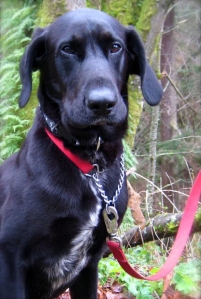Last week I received a distressing email from a friend of mine who wrote to tell me that her friend’s dog was missing. “Lucy”, a 10 year-old American Husky mix, had disappeared from a boarding facility. Her “Mom” Ann was in Texas, when she received the call that no pet guardian ever wants to receive.
I immediately posted the alert on Tiny Growl’s Facebook page and hoped that the power of social networking would help spread the word. Fortunately, this story has a happy ending. Ann recounts the traumatic sequence of events on her beautifully written blog with such detail and includes such of a wealth of information, that I encourage everyone to read Lucy and Ann’s story.
I also encourage everyone to support The Missing Pet Partnership, an organization that I have blogged about a couple of times before. They do amazing work, have a wonderful website with specific and effective information on how to find lost pets (which Ann used in creating her plan to find Lucy) and are always struggling financially.
One piece of proactive information that I would like to add here is to remind everyone to follow the Missing Pet Partnership’s advice about keeping a sample of your dog’s scent and DNA on hand, just in case you ever need to hire one of their tracker teams to search for your dog. Here’s what they recommend:
Wearing a pair of rubber gloves, wipe your pet’s body with a sterile gauze pad – wipe its back, tummy, and mouth. Place in a ziplock bag. Write the date and your pet’s name on the bag. Along with the scent, you should collect a sample of DNA, in case it is needed for making a positive ID. Collect a whisker, some toenail clippings, and a few hairs that you have pulled from your pet, including the root. Shed hairs alone are no good, as you need the root, which contains the DNA. Add these to the ziplock bag and put it in your freezer. (If you have multiple pets, you will need separate bags for each.) Recollect scent and DNA samples once a year.
And finally, make sure you have a really good picture of your buddy ready for copying, in case you ever need to post “Lost” posters, you don’t want to spend time searching for pictures, when you need to be searching for your dog. Let’s hope that you never have to go through what Lucy and Ann experienced. But if you do, having learned what to do in advance will save time, help you to focus on putting together an action plan and help bring your Lucy home as quickly as possible.
















